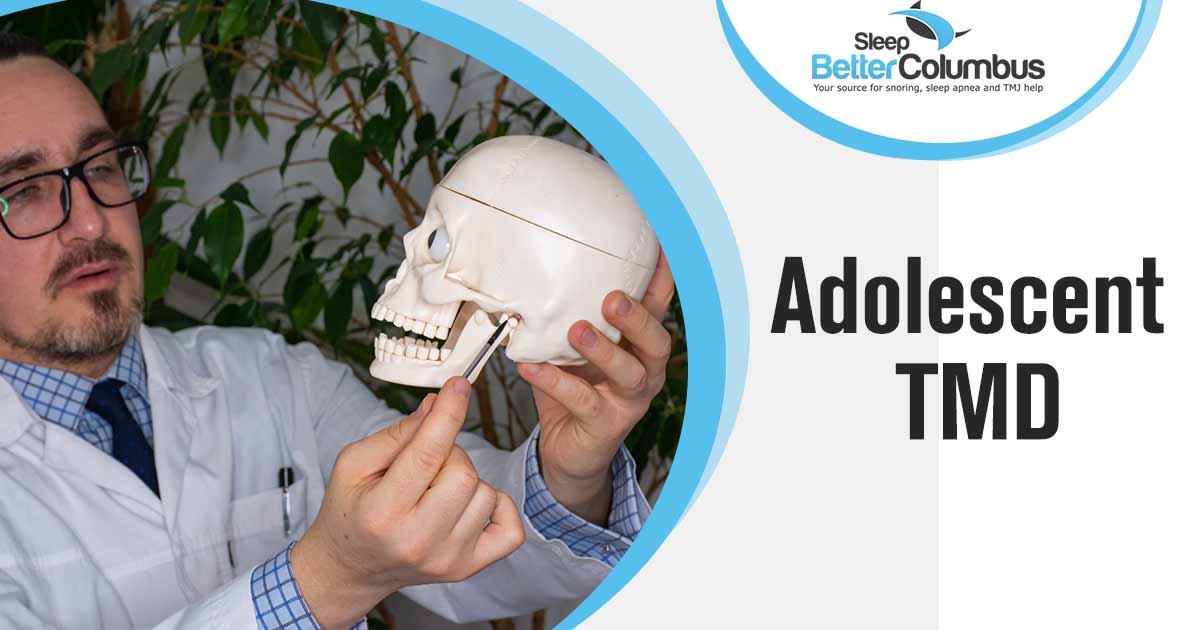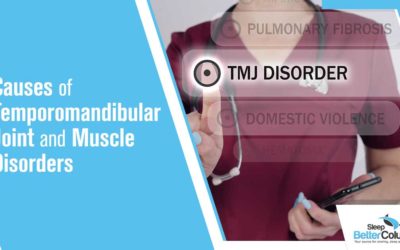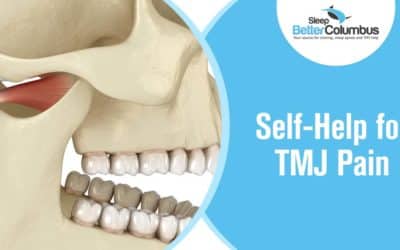Temporomandibular disorder (TMD) can affect anyone and isn’t limited to just adults. TMD and jaw pain are much more common in teenagers, particularly female teenagers. Adolescent TMD is often overlooked because teenagers and parents might easily dismiss a symptom like jaw pain on one side as a minor inconvenience that should go away in time.
However, if jaw pain in adolescents is left unchecked and untreated, the issue can escalate into TMD or another serious condition. When parents know how to recognize jaw pain and other common TMD symptoms early, they can ensure their adolescent child gets the help they need before the condition worsens.
What is TMD?
A temporomandibular disorder (TMD) is a disorder of the temporomandibular joints (TMJ), jaw, muscles, and nerves associated with chronic facial pain. TMD causes pain in the jaw joints, muscles, and ligaments controlling your jaw’s movement. Temporomandibular dysfunctions or disorders, also known as TMJ disorders, can greatly influence your daily life by impacting your ability to chew, yawn, or speak.
What Does Adolescent TMD Look Like?
Teenagers who have adolescent TMD can experience excruciating pain from something as simple as chewing gum or food or yawning. Teens with temporomandibular joint disorders often have tinnitus, dizzy spells, or acute migraines. They may frequently complain about their jaw locking or a spanning pain that moves downward from their face, head, or ear. The intensity of TMJ pain an adolescent experiences varies; some adolescents with TMD can function during these episodes while others cannot.
Common Symptoms Teens with TMD Experience
TMJ disorder symptoms vary widely. Adolescents with TMD might experience jaw pain, facial pain, shoulder pain, or neck pain that can range from mild to severe pain, with some teens experiencing chronic pain. Common signs and symptoms of temporomandibular joint dysfunction in adolescents include:
- Pain in the jaw joint and/or chewing muscles (the most common symptom)
- Difficulty chewing, pain while chewing, or chewing that limits jaw movement
- Stiffness in your jaw
- Pain in one or both temporomandibular joints
- Aching pain in and around your ear
- Pain or tenderness of the jaw
- Aching facial pain
- Swelling of the side of the face
- Toothaches
- Pain that spreads to the face and/or neck
- Shoulder or neck pain
- Tinnitus (ringing in the ears), hearing loss, or dizziness
- Headaches and/or migraines
- Blurred vision
- Limited movement or locking of the temporomandibular joint, making it difficult to open or close the mouth
- Painful clicking sounds, grating sensations, or popping in the jaw joint when opening or closing the mouth
- Changes in how upper and lower teeth align or fit together
Understanding the Complexities of TMD in Teenagers
As a parent, it’s concerning when your child struggles with headaches or pain. Unfortunately, symptoms like headaches, jaw pain, or neck pain are often mistakenly attributed to hormonal changes or growing pains. It’s important to consider that TMD might be responsible, particularly if your teen is experiencing episodes of jaw locking or complaining of one-sided pain.
Adolescents with TMD can experience severe chronic pain that is far worse than the average toothache. Chronic jaw pain in teenagers that is left untreated can lead to problems eating or talking, difficulty concentrating in school, or an inability to take part in enjoyable activities.
Female Adolescents at Highest Risk for TMD Pain
Temporomandibular joint disorder has been found in both adolescent boys and adolescent girls, but it is more prevalent in girls. A recent study conducted in Oslo, Norway, has found that female adolescents are more likely to experience TMD pain than male adolescents. Facial pain and TMD pain were higher in females, with the rate and severity being higher the older the female adolescent was. Female adolescents also suffered from more severe pain.
Treating TMD in Adolescents
If you think your teenager is struggling with TMD, It’s essential to seek professional advice. Treatment plans for adolescents with TMD often differ from those for adults and take into consideration the teenager’s growth and development. The earlier TMJ in teens is identified and addressed, the better. Treatment plans for TMJ in teenagers often differ from those for adults, taking into account the teenager’s growth and development.
The underlying cause of your temporomandibular joint (TMJ) disorder and the severity of the pain are two factors taken into consideration when determining the TMJ treatment that is right for your child. Noninvasive options should be tried first. Treatment alternatives encompass home treatments, medication, self-care, and other non-invasive therapies. By adopting the appropriate strategy, you can effectively manage your adolescent’s TMD, enabling them to lead a normal, pain-free life.
The Best Approach to Jaw Pain Treatment for Teens with TMD
There are several treatment options for adolescents with TMD, and the best options for your child depend on the individual and the severity of the problem.
A TMD specialist will recommend various ways to counter the issue and help develop an evolving treatment plan to adopt preventive techniques as your child ages. Some of these treatment options include:
- Acupuncture
- Biofeedback
- Dental appliances
- Muscle Relaxers
- Physical therapy
- Prescription medication
- Relaxation training
- Stretching
- Surgery
Things That Can Worsen Adolescent TMD
When you’re aware of the habits that can worsen adolescent TMD, you can help your teenager avoid or prevent these habits so they can decrease pain and TMD flare-ups. Habits that can make temporomandibular disorders worse include:
- Nibbling on objects such as pens, pencils, or toothpicks, which is often associated with feelings of anxiety.
- Chewing ice, lollipops, or other hard candies
- Excessively chewing gum
- Grinding or clenching your teeth during the daytime
- Nail biting or lip chewing
- Poor posture (Strains the neck, shoulders, and jaw muscles.)
- Taking large bites of food (This overworks jaw muscles.)
- Sleeping on your stomach
- Utilizing your teeth for tasks like opening packages, removing tags from clothing, holding objects, or opening bottle caps.
What Should I Do If I Think My Teenager Has TMD?
If you think your teenager has a TMJ Disorder or they have been diagnosed with one, do not ignore the effects of it. Help your teen avoid things that can increase pain or worsen the condition. Consult a dentist or doctor who can help you and your teenager find ways to treat adolescent TMD. Thankfully, there are various strategies available to treat temporomandibular joint disorders, reduce discomfort, and alleviate symptoms.
Help for Adolescents with TMD
Suppose your adolescent is suffering from any TMD symptoms. In that case, an evaluation with a doctor who treats temporomandibular joint disorders can help determine the best treatment options for eliminating pain and ensuring your child’s bite is positioned correctly. Many parents are concerned about adolescent TMD and might have lots of questions about the condition and how it can affect their teenager.
Call Sleep Better Columbus at (614) 777-7350 to schedule an appointment and TMD evaluation for your adolescent today and get your questions and concerns answered.




